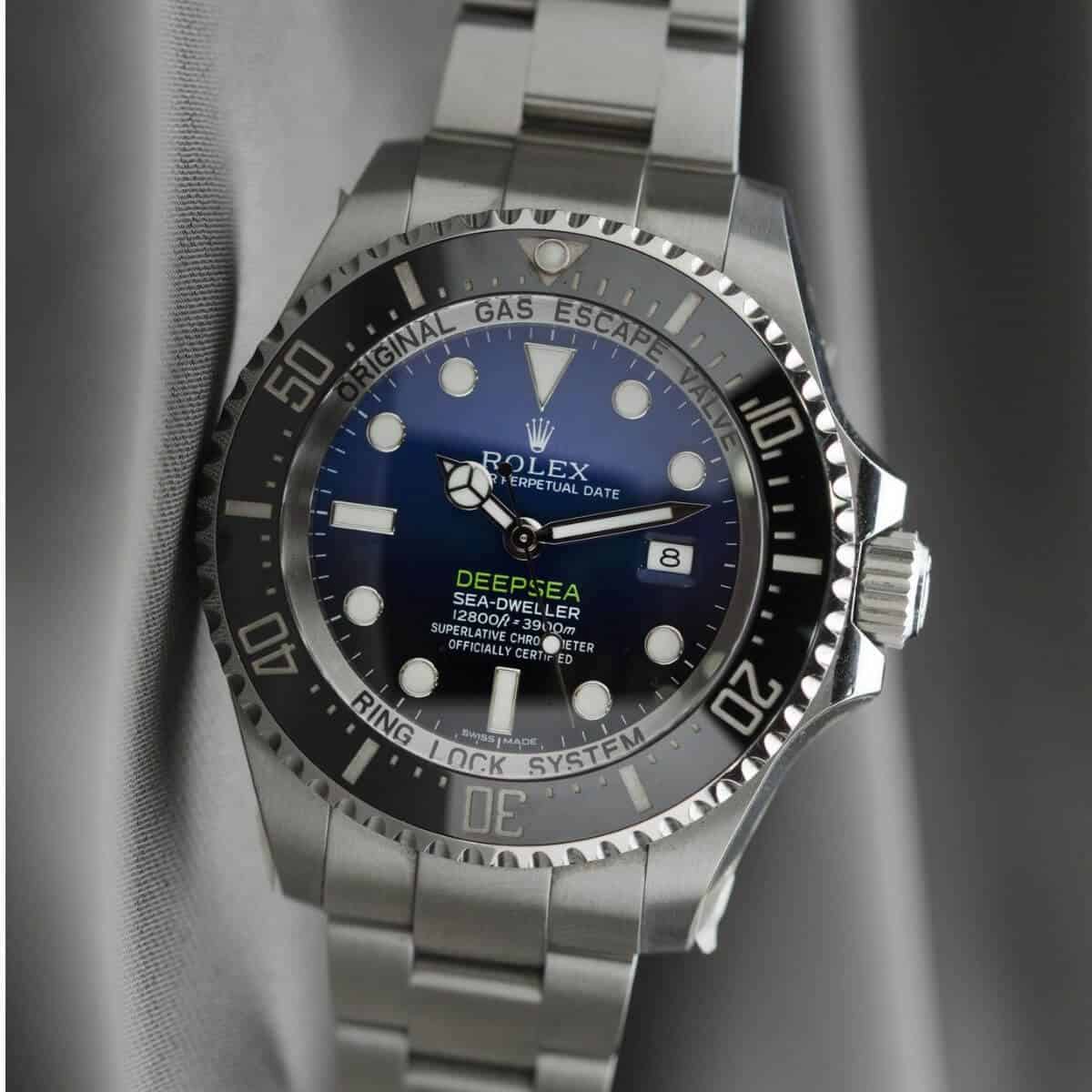The watch’s water resistance numbers describe the depth and pressure it can handle. Some are resistant to splashes, while others can dive deep.
Water-resistance is a feature that many watches have, and brands make it a selling point.
Whether it’s a luxury watch or one that’s under $100, you won’t find a waterproof watch.
Also, the Federal Trade Commission suggests that waterproof is too strong of a term for marketing a watch.

Instead, water-resistant means the watch can withstand water exposure to an extent.
A watch’s depth and pressure limits are essential features.
The following covers the water-resistance numbers on a watch and what they mean.
The numbers have ATM next to them, which stands for atmosphere, also known as a bar. One atmosphere equals 10 meters or 30 feet.
| Depth Rating | Activity |
|---|---|
| 3 ATM/3 Bar/30 Meters/100 Feet | Splash-resistant. No swimming. |
| 5 ATM/5 Bar/50 Meters/165 Feet | Short swim. No snorkeling or diving. |
| 10 ATM/10 Bar/100 Meters/330 Feet | Swimming and snorkeling. |
| 20 ATM/20 Bar/200 Meters/660 Feet | Water sports and diving. |
| 30 ATM/30 Bar/300 Meters/990 Feet | High-impact water sports and diving. |
| 100 ATM/100 Bar/1,000 Meters/3,300 Feet | Scuba and saturation diving. |
3 ATM/3 Bar/30 Meters/100 Feet
A watch with a water resistance of 3 ATM or 30 meters can be misleading.
You won’t be able to take it 30 meters below sea level.
Instead, the watch is splash-resistant.
It can handle light rain or splashes from hand-washing. Anything more can damage it.
A watch with a depth rating of 30 meters is best for daily wear. Avoid getting it wet.
5 ATM/5 Bar/50 Meters/165 Feet
5 ATM watch water resistance means it can handle splashes, showers, and a short swim. But, it won’t withstand diving or snorkeling.
It’s an excellent watch to wear daily.
Also, it’s best to take it off before going into the water. Reduce exposure to water and keep it in good condition.
10 ATM/10 Bar/100 Meters/330 Feet
If your watch has a depth rating of 10 atmospheres, it can withstand swimming and snorkeling.
You can go into the water knowing your watch is safe.
While you can take it underwater, don’t dive with it.
20 ATM/20 Bar/200 Meters/660 Feet
A 20-bar watch is suitable for swimming, diving, and water sports.
The only exception is scuba diving.
Your watch won’t be able to handle going deeper than 200 meters of still water or severe wave impacts.
So, wear it when you’re swimming or diving without helium.
30 ATM/30 Bar/300 Meters/990 Feet
If your watch has a water resistance rating of 300 meters, it’s ideal for scuba diving, high-impact water sports, and saturation diving.
While it’s not at the ISO 6425 standard, you can dive as long as your gaskets are in good condition.
100 ATM/100 Bar/1,000 Meters/3,300 Feet
A watch with a 100 ATM rating is a deep diver watch. It can withstand a lot of pressure and is excellent for saturation diving.
While you may not dive 1,000 meters deep, the feature ensures your watch is safe in water.
It’ll survive in harsh climates without special equipment.
ISO 6425
To regulate the ratings and set standards for water-resistant watches, the International Organization for Standardization, or ISO, has a standard called the ISO 6425.
The organization developed a series of tests that a watch must pass to qualify for the certification.
The test can be done by the manufacturer or a testing agency.
The thorough test tracked the reliability of the watch, the resistance of the crown, thermal shock, water pressure, and ensuring there wasn’t any condensation.
Frequently asked questions
How often should I test my watch?
Test your watch at least once a year. The frequency in which you test it will also depend on what you do when you wear it. Note that saltwater can cause wear and tear, which causes the water-resistance to drop.
Can I shower with my watch on?
If you want to shower with your watch on, make sure it’s rated 100 meters at a minimum. You should also make sure that the crown’s screw is pushed in.
How can I make sure my watch lasts long?
Taking care of your watch is vital. Wipe off moisture, dirt, and sweat with a clean and dry cloth after you take it off.
Can I clean my watch in the sink?
Clean your watch in still water and avoid using running water.
Conclusion
The water resistance number on a watch will determine how much water and pressure it can withstand.
Understanding what they mean will ensure you treat your watch with care. It’ll last longer and be more effective.
Featured photo courtesy of Pexels.
